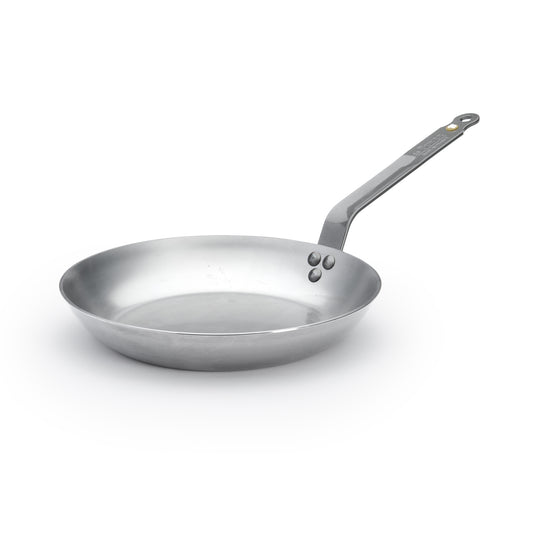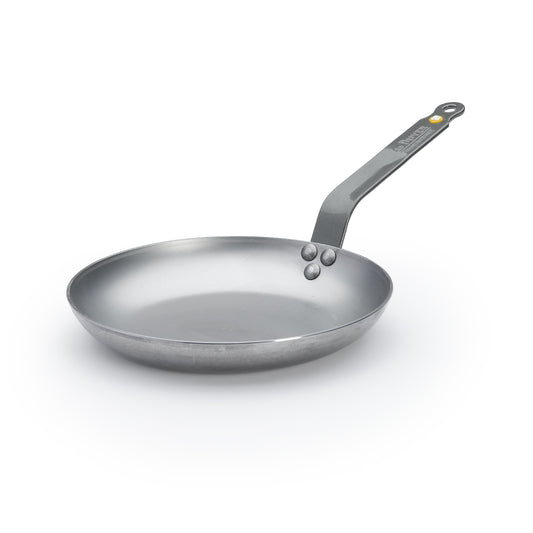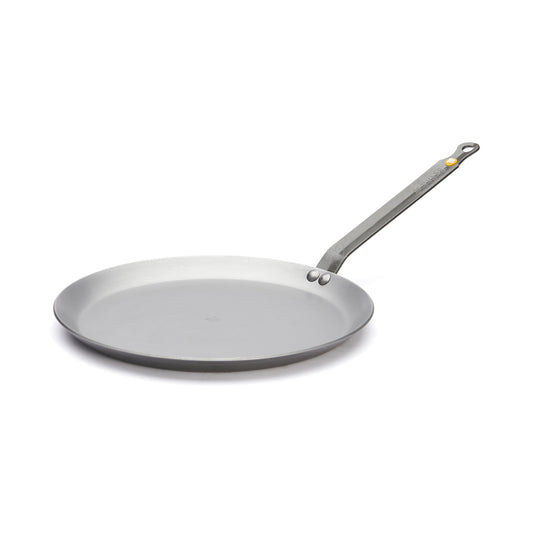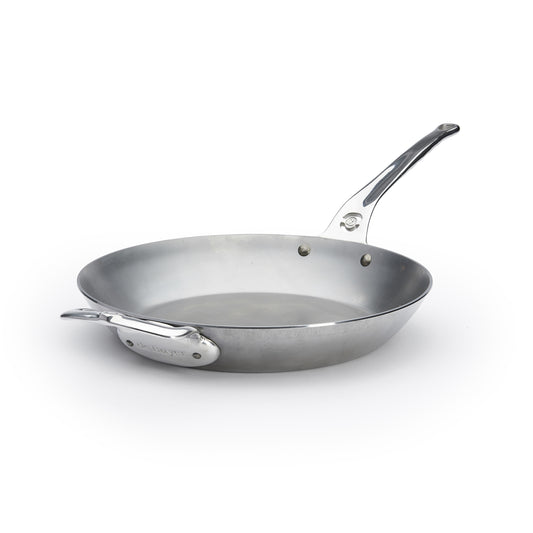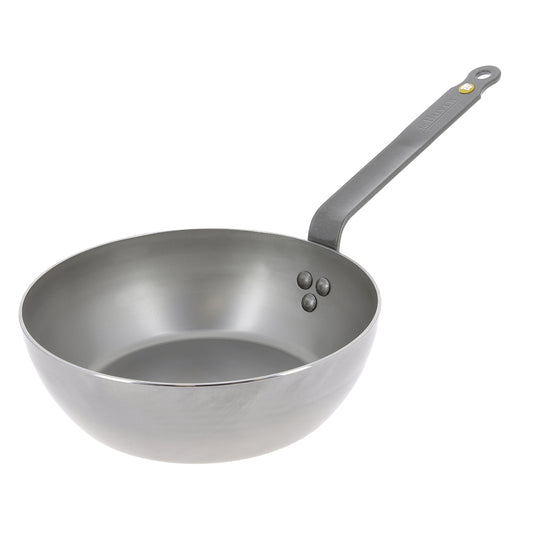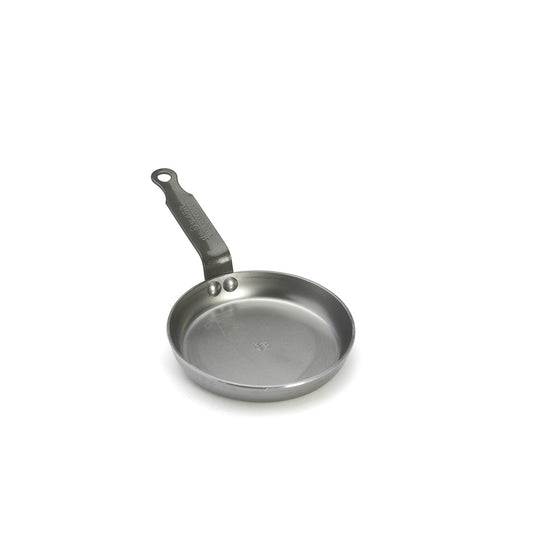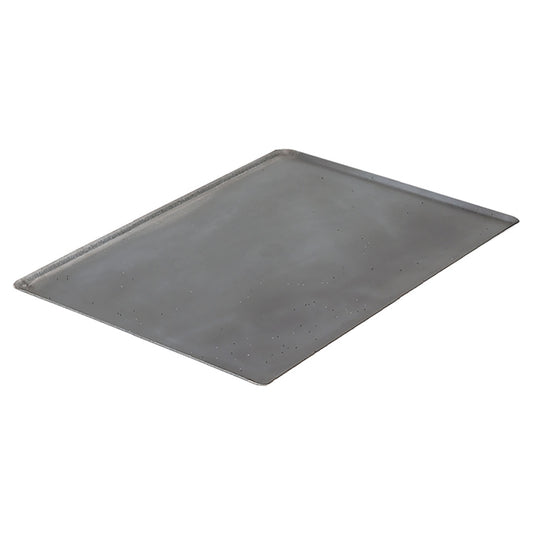The Art of Broiling: A Guide to Perfectly Cooked Dishes
Learn how to broil like a pro with our expert guide. Discover techniques and the best cookware for achieving perfectly cooked, restaurant-quality dishes.
de Buyer

Broiling is an intense, high-heat oven cooking method that uses direct heat from above, similar to grilling but without the grill. The broiling method can be a great way to achieve a crispy, caramelized exterior while retaining the natural juiciness of food.
This article will explain how broiling works, how to do it, and what types of dishes it’s best suited for.
What is Broiling?
The first gas and electric stoves were built and sold to mass markets in the early 20th century. This convenient cooking method included both bake and broiler functions, but there's a distinct difference between the two:
- Baking is a slow-warming cooking method where heat radiates from either the bottom of the oven or the bottom and the top. Most bake settings range in temperature from 200 °F to 500 °F, and chefs will set the exact temperature when cooking, for example, 350 °F.
- Broiling is a fast-acting cooking process where heat radiates from the top of the oven directly onto the food. Broil oven settings aren’t as precise as baking, and many ovens only offer medium and high settings. The hottest setting can reach temps as high as 550 °F.
The quick, hot broil method provides intense heat directly to the food, similar to how a grill uses heat from below. The heating element is fast acting and, unlike an oven, which takes time to bake, broiling will almost immediately put color on food. This fast method requires close attention to avoid unintentional charring.
Unlike a grill, broiling isn't meant to cook thick foods all the way through. The heat intensity means there's no time for internal temperatures to rise significantly without burning the food's surface. Therefore, broiling works best with thinner cuts of meat, certain vegetables, and foods meant to be boiled or browned on the surface only.
How to Broil: A Step-by-Step Guide
Like all cooking methods, this will take practice as you learn how your oven cooks and get used to various recipes. You'll also need specific tools and equipment, such as a high-heat pan or baking sheet, a rack, and a well-preheated oven. In some circumstances, you'll need an instant-read thermometer.
Use this step-by-step guide to help you broil food in the oven.
- Prepare the Food: Season your food with oil, salt, pepper, and any other desired seasonings. For meats, consider marinating for extra flavor.
- Set the Rack Position: Place the rack about 4-6 inches from the broiler heating element for optimal results.
- Preheat the Broiler: Preheat the oven’s broiler on high for at least five minutes to ensure it’s hot enough.
- Place the Food on a Broiler Pan: A broiler pan can be any pan with sides that are safe to use at high heat. This pan elevates your dish off the rack and promotes air circulation.
- Broil and Monitor Closely: Place the food in the oven and cook. Keep a close eye on it, as broiling happens quickly. Even 30 seconds can make a difference when broiling.
- Check for Doneness: Use an instant-read meat thermometer to ensure meats are cooked to the proper temperature, and test vegetables for tenderness.
What Foods Are Best for Broiling?
Generally, broiling is a quick kitchen hack. Running behind on your cooking schedule? Fire up the broiler. You can toss in garlic bread, summer squash, french fries, and more. Some foods are ideal for broiling all on their own, and some foods are ideal for grilling or blow touching, but without either, a broiler is the next best option.
Foods meant to be broiled include lasagna and all types of fish. Broiling lasagna for under five minutes will bubble and crisp the top layer of cheese and help the entire dish retain the perfect eating temperature. Ideally, you’ll broil a fattier fish like trout and salmon. The broiler will render the excess fat and result in a flakey, delicious taste. Most cuts of fish will be thin enough to cook entirely within the broiler and achieve a delightful crisp on the skin.
Foods like French onion soup and vegetables are traditionally finished/cooked with a blow torch or with the grill, respectively. If you live in an apartment, don't feel like firing up the grill, or lack time to hunt down your culinary blowtorch, the broiler is an excellent, easy way to achieve the same effect.
Steak can be prepared in so many ways, and everyone has their favorite cooking method. When broiling steak, chefs tend to sear the meat on a stovetop and then transfer it to the broiler to reach the desired doneness. As long as you have your instant-read thermometer and know what temperature you're trying to reach, this steak preparation method is easy.
Avoid trying to broil a steak that's thicker than an inch and a half. Any bigger is simply too thick for the intense heat of the broil to penetrate quickly without burning the top.
Tips for Perfect Broiling Every Time
Here are the practical tips for successful broiling:
- Mind the Heat: As mentioned, broiling cooks food quickly and gets very hot. This means that opening an oven mid-broil will blast you with a wave of heat. Be mentally prepared for this and keep children and pets away from the kitchen.
- Use a Thermometer: For meats, always use a meat thermometer to ensure they’re cooked to the right temperature.
- Avoid Overcrowding: Give food space to cook evenly and get a good sear. Don’t overcrowd the broiler pan.
- Flip Halfway: Some foods should be turned halfway through to ensure even browning. For example, when charring peppers for salsas and marinades.
Common Mistakes to Avoid When Broiling
Learning to broil is a process. Avoid the top five most common mistakes and practice until you've mastered broiling.
- Not Preheating the Broiler: Failing to preheat the broiler can result in uneven cooking.
- Overcrowding the Pan: Like all cooking methods, overcrowding can prevent even cooking and stop the food from crisping properly.
- Not Using the Right Cookware: Triple-check that your chosen pan is safe for high-heat cooking. If it's not, it may melt to the rack, running more than just your dish.
- Not Using the Drip Method: Broiling will render fat, and as this fat is pulled out of the meat or fish, it will pool at the bottom of the pan. You can use a pan, like the Blue Carbon Steel Baking Sheet, with a rack set inside to allow for proper airflow. The fat will drip down into the bottom of the baking sheet instead of pooling around your protein.
- Not Using Aluminum Foil: If possible, line your pan with aluminum foil to simplify the cleanup process. It’s a step that takes seconds and saves you scrubbing time later.
Hone the Art of Broiling for Perfectly Cooked Dishes
The right technique and cookware allow you to broil with confidence, achieving restaurant-quality results. Remember to set your rack, preheat, and check frequently for doneness.
For best results, choose carbon steel frying pans like the Mineral B Carbon Steel Country Fry Pan or Mineral B Pro Carbon Steel Fry Pan with Helper Handle that can withstand broiler temperatures. Carbon steel is a durable option with heat retention similar to cast iron but lighter, like stainless steel. Whether searing a steak or finishing a gratin, the right pan makes all the difference.
Explore de Buyer’s premium cookware and start broiling, baking, and cooking with confidence.
Learn More
Recommended for You
-
MINERAL B PRO Carbon Steel Fry Pan
Regular price $90.00Regular priceUnit price / per$0.00Sale price $90.00 -
MINERAL B Classic Carbon Steel Fry Pan
Regular price $60.00Regular priceUnit price / per -
MINERAL B Carbon Steel Omelette Pan
Regular price $65.00Regular priceUnit price / per -
MINERAL B PRO Carbon Steel Omelette Pan
Regular price $105.00Regular priceUnit price / per -
Protective Sleeve for Pan Handle
Regular price $9.95Regular priceUnit price / per -
MINERAL B Carbon Steel Crepe & Tortilla Pan
Regular price $70.00Regular priceUnit price / per -
MINERAL B PRO Carbon Steel Fry Pan with Helper Handle
Regular price $145.00Regular priceUnit price / per -
 Sold out
Sold outBlue Carbon Steel Fry Pan
Regular price $45.00Regular priceUnit price / per -
Blue Carbon Steel Crepe & Tortilla Pan
Regular price $25.00Regular priceUnit price / per -
MINERAL B Carbon Steel Country Fry Pan
Regular price $100.00Regular priceUnit price / per -
MINERAL B Carbon Steel Egg & Pancake Pan
Regular price $35.00Regular priceUnit price / per -
Blue Carbon Steel Rectangular Baking Sheet
Regular price $35.00Regular priceUnit price / per












